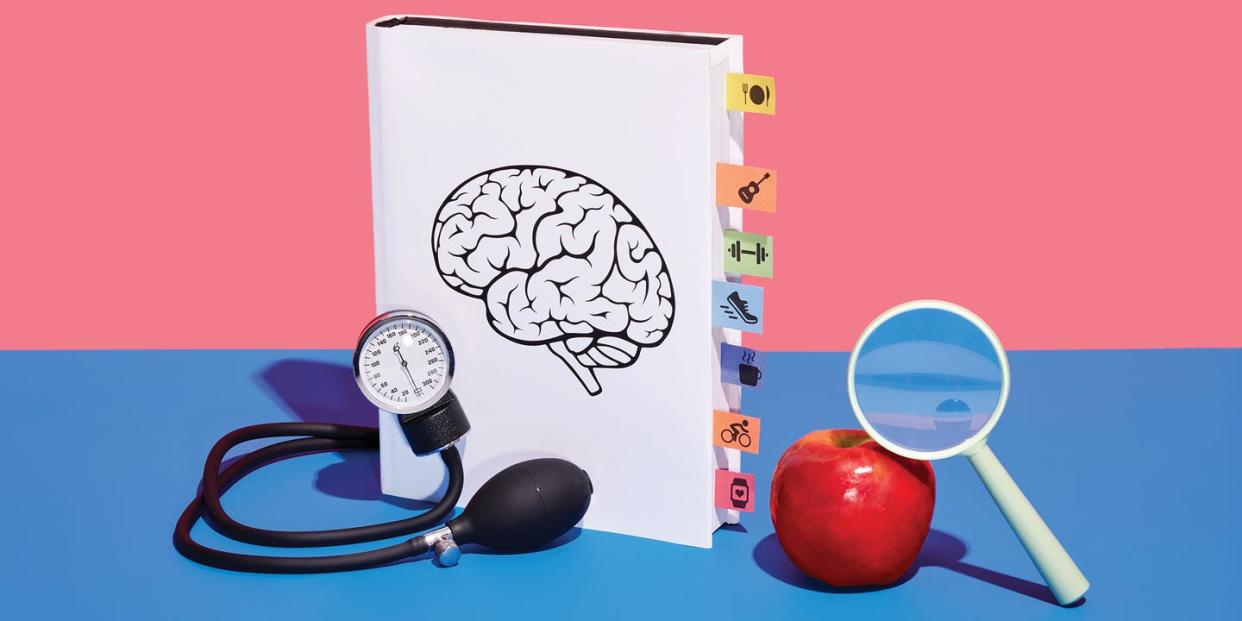A Quick Guide to Brain Basics: From Parts of the Brain to Memory

The brain is our body’s command center, the control tower for our body and mind—no wonder it’s the focus of intense research across the globe, with so much interest in figuring out the mysteries of its inner workings, as well as what can be done to stave off cognitive decline.
According to the British Medical Journal, there are at least three levels of brain function: The brain controls movement and deciphers input from our senses, it manages our cognitive and emotional processes, and it maintains social cognition and behavior.
“The brain is like a supercomputer,” says neuroscientist Tara Tracy, Ph.D., assistant professor and a specialist in neurological decline at the Buck Institute. “And the circuits within the supercomputer are the neurons in the brain.”
Neurons are nerve cells; there are about 100 billion neurons in the brain of an adult, “and they’re not all the same,” says Tracy. “There are all sorts of neurons that do different things. Neurons process all the information for us. They help us have cognition, the ability to make decisions, the ability to remember things.” All of your thoughts, the sensations you feel, the movements you make, your emotions and memories—they all stem from signals that are sent through neurons.
Inside the brain
“For daily living, there are different types of neurons,” says Tracy. “There are specific neurons that are important for our movement, neurons that are important for functions like dealing with anxiety or stress. There are neurons that are important for memory and remembering things, and neurons that are important for encoding information from the sensory system—what we see or smell or hear.
“You put all these together, and it’s very complicated,” she continues, “but all of these different neurons come together in the brain and can function together as this big supercomputer, to integrate all this information and allow us to do things. That’s one of the most fascinating things about the brain, that it can be so complex but it all happens at the same time—because neurons are also very fast. They transmit information very, very quickly, at the millisecond level.”
That speed is important to consider, because we know that some of our behaviors and habits can make the system operate more sluggishly. And there are many advantages to having neural communication that’s operating at an optimal level.

“Let’s say you trip and fall,” says Tracy. “You can respond to that quickly if your neurons are really fast, if the connections are well made within the brain and the communication between the neurons is fast.” Meaning, you’ll have an easier time righting your balance before you face plant on the sidewalk. “So that’s an important property of neurons in the brain, that they can do things very quickly,” she says. “And they’re structured, and the system is set up, in a way that helps you accomplish things to the best way possible—meaning to protect yourself from potential dangers.”
The importance of connections
When it comes to the workings of the brain, so much is still not understood. The signals are sent from neuron to neuron along various pathways, and neuroscientists have a lot of those pathways worked out, Tracy points out. “The visual system, for example, is fairly well understood, in terms of the neurons that go from your eyes into your brain and where in the brain they’re connected, and how they then process the visual information,” she says. “There are a number of pathways that neuroscientists do have a pretty good understanding of—but not every pathway.”
Memory isn’t completely understood, she explains. “When you first form a memory, we kind of know where that happens in the brain. But the long-term storage of a memory—like when you remember something that happened 20 years ago—the pathways of how that information gets stored, and where, are not well understood.”
Depending on what information is being processed, it gets processed in different parts of the brain, and those different sections all work together. Three important areas: The cerebellum is in charge of movement; when you’re out there on the pickleball court, or are learning how to play the guitar, that’s the area of the brain that’s activated. The cerebrum is what allows conscious thoughts, plans, imagination, reading, recognizing people you know, and so much more. The cerebral cortex is where most of the brain’s information-processing takes place.
An elaborate, brilliant machine—brought to us via evolution, many neuroscientists believe, says Tracy. “We believe that we’ve evolved the abilities to manage the things we do in daily life, because our brain evolved with this structure, these connections and neurons.”
A smooth-working noggin
Brain health, then, is when all of these are clicking along well. And though much of the mechanisms that cause various brain dysfunctions are a puzzle, there’s growing research that underlines the importance of taking steps to protect your brain health: challenging your mind, eating a healthy diet, being socially active, prioritizing sleep, taking care of your heart, and—perhaps especially important—emphasizing exercise.
“I think most scientists think that exercise is super-important,” says Tracy. “Lack of exercise in general can have a bad effect on the brain. We don’t really understand why—there’s been a lot of work on this, and scientists have ideas about it, but research has shown that people who do a lot of exercise are associated with having good brain health.”
So lace up your sneakers, find ways to destress, make sleep a priority, eat foods that are best for your brain and heart. It’s worth doing whatever we can, because good brain health is the bottom line goal—so that this magnificent machine, this intricate supercomputer, can keep us functioning at our very best, for as many years as possible.
You Might Also Like
